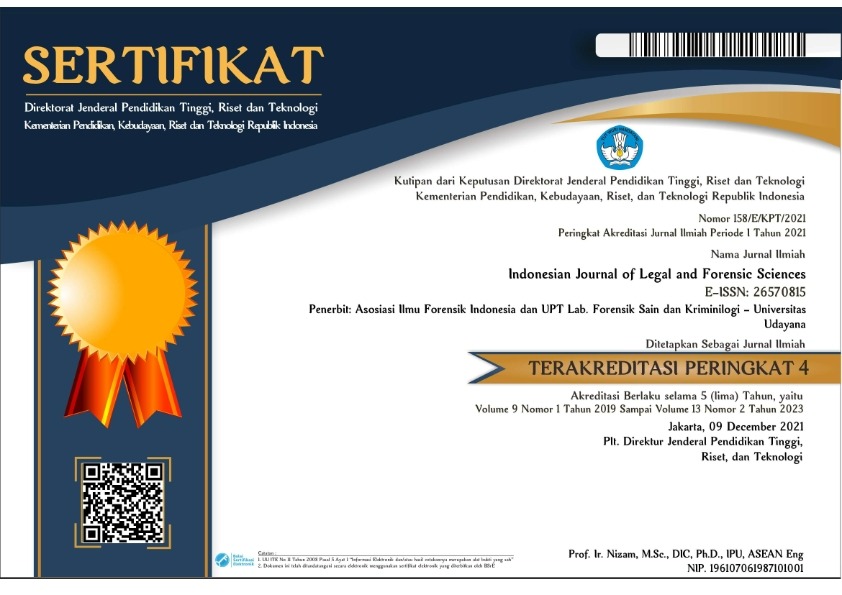RECENT TRENDS IN DENTAL FORENSICS
Abstract
Teeth are the most robust tissues of the human body, and usually most resistant to post-mortemdecay. The dental patterns tend to be highly individualized and are therefore very useful for identification ifappropriate records are available for comparison. For these reasons, dental evidence remains important inforensic cases after accidents, crime or prolonged exposure to the environment. Routine antemortem dentalrecords are applied for storage and retrieval of such information but unfortunately not always available. Thesame is true for DNA typing, which is an increasingly useful approach with decreasing cost of analysis. Thispaper aims to review some of the new developments, particularly in biochemical forensic tools and methodsthat can be applied also for dental samples. No new tool will solve all cases, and it remains necessary to applyan array of techniques for post-mortem identification. It is also very important to use established protocols forefficiency and quality assurance in forensic investigation. Some challenges are highlighted for forensicapplication in Indonesia.Downloads
Download data is not yet available.
How to Cite
AUERKARI, Elza.
RECENT TRENDS IN DENTAL FORENSICS.
Indonesian Journal of Legal and Forensic Sciences (IJLFS), [S.l.], v. 1, jan. 2008.
ISSN 2657-0815.
Available at: <https://ojs.unud.ac.id/index.php/ijlfs/article/view/3246>. Date accessed: 19 jan. 2026.
Section
Articles
Keywords
dental forensics, dental records


















